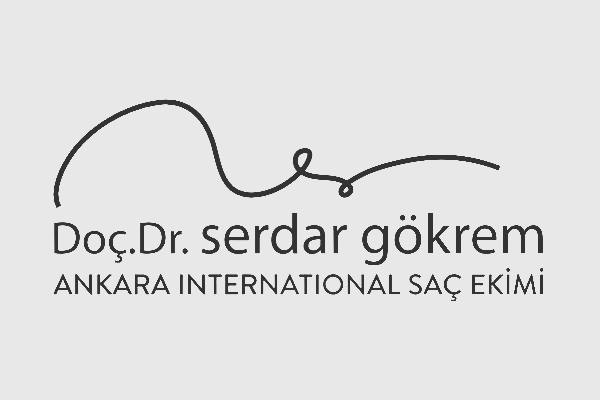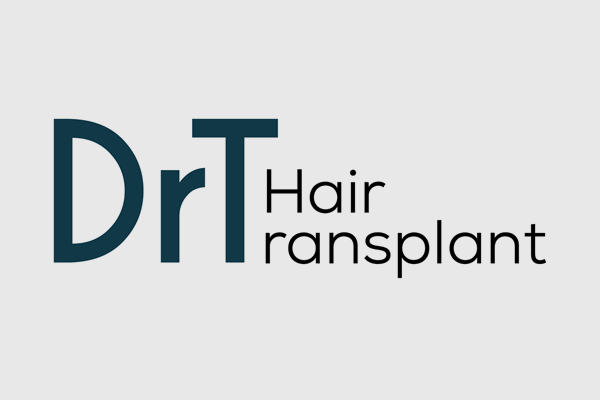
Hair Transplants
The Hair transplant is one of the five most popular cosmetic procedures in men. Increasingly, it is gaining popularity in women as well.
In patients with extensive baldness, it may be the only treatment option available and a permanent solution. On this page, we will present the various types of hair transplants, their complications and risks, the road to recovery, and financial considerations.
Currently, more than 735,000 individuals undergo hair transplantation each year across the globe. According to the International Society of Hair Restoration Surgery (ISHRS), the market size of hair transplantation crossed USD 6.5 billion in the year 2019. The main reason cited by patients for undergoing hair transplantation was social/dating, followed by career/professional, according to a consensus report by ISHRS.
At Cosmena you have the option to utilize our comparison of the most prominent Hair transplant clinics in both the UK and abroad.

Hair Transplants in Turkey
Heard about Turkish hair transplants and wondering what the fuss is all about? Here is our comparison with only Turkish clinics with locations in Istanbul, Ankara and Izmir.

Hair transplants in the UK
Don’t want to leave the land of bangers and mash for your hair troubles? No worries fam, we got ya covered. In this comparison you will find only Clinics with locations in the UK.
The Best Hair Transplant Clinics 2021
-
Asmed Clinic Hair Transplant
At the Asmed Clinic, the goal is to exceed your expectations and assure your total pleasure by cutting-edge hair transplantation. Their highly-skilled full-time team believes that every element and phase of hair transplantation must be considered to get excellent outcomes.
-
Capilclinic Hair transplant
Capilclinic is a hair grafting specialist clinic with five-star facilities in the Florence Nightingale Hospital in Istanbul – Turkey. Dr. Oguz leads the medical staff at the clinic. It is regarded as one of the better places in Istanbul to receive a hair transplant by the domestic population.
-
Crown Clinic Hair Transplant
The Crown Clinic was established in 2007 by its main resident hair transplant surgeon Dr. Asim Shahmalak. Dr. Shahmalak is a world-renowned hair transplant surgeon who is most famously known as the first surgeon to perform an eyelash hair transplant in 2009.
-
Dr Mutallip Keser Hair Transplant
Dr. Keser was the first clinic in Turkey to execute the FUE technique of hair transplantation, which was a significant advancement in the field of hair restoration. Kesar is a fellow of the International Society of Hair Restoration Surgery and has nearly 10 years of expertise in the field of hair transplant surgery.
-
Dr Serdar Gokrem Hair Transplant
Dr. Serdar Gökrem Clinic is among Turkey’s oldest renowned hair transplantation facilities. Dr. Gökrem, as the name implies – is the head of the clinic and runs it in the center of the touristic destination of Ankara.
-
Dr Tayfun Oguzoglu Hair Transplant
DrT Hair Transplant Clinic was founded in 1998 and had been providing hair transplantation services ever since. In 2016, DrT Hair Transplant Clinic expanded its medical services to Kyrenia, Cyprus, from Istanbul, Turkey.
-
Fortes Hair and Skin Clinic Hair Transplant
The Fortes Hair And Skin Clinic is established in Harley Street, one of the most prestigious and well-known locations in London. At the Fortes Hair And Skin Clinic, your hair is their Forte.
-
Glasgow Clinic Hair Transplant
Established in 2012, the Glasgow Clinic has made its way into the news by being one of the best hair transplant clinics in Scotland. Since then, surgeons at the Glasgow Clinic have performed an amplitude of hair transplants, and even treated celebrity footballers!
-
Hairneva Hair Transplant
Hiarneva Hair Transplant Clinic was founded by Cosmetic Surgery Expert Oztürk in collaboration with Fulya Acbadem Hospital, that opened its doors in 2010 and is associated with Acbadem Health Network, one of Turkey’s largest healthcare organisations.
-
Harley Street Clinic Hair Transplant
Having established itself as one of Britain’s leading hair transplant clinics, the Harley Street Hair Clinic offers the most innovative and expert techniques for hair restoration to both men and women.
What is a hair transplant?
Hair loss is one of the most common cosmetic conditions affecting both men and women. The causes are myriad and discussed in detail in the coming sections. In simple words, hair transplant is the process of taking hair follicles from a donor area and implanting them on a recipient site.
A hair transplant is an autologous procedure, meaning the person’s own hair is used, avoiding the risks of severe foreign body reactions and graft rejection. The use of punch hair transplant in the 1950’s served as the basis for the modern methods of hair transplantation. Significant progress was made in the 1990s to fine-tune the techniques.
Currently, more than 735,000 individuals undergo hair transplantation each year across the globe. According to the International Society of Hair Restoration Surgery (ISHRS), the market size of hair transplantation crossed USD 6.5 billion in the year 2019. The main reason cited by patients for undergoing hair transplantation was social/dating, followed by career/professional, according to a consensus report by ISHRS.
A related procedure is a hairline lowering surgery, which is sometimes used as an alternative to hair transplant in patients with a high frontal hairline or hairline recession. It is not a type of hair transplant procedure and involves excising part of the forehead skin to lower the hairline.
Transplant methods
The hair transplant techniques have come a long way since their first introduction in the 1950’s. Currently, the most commonly used surgical methods are follicle unit transplant (FUT) and follicle unit extraction (FUE). FUE is the newer method of the two and is increasingly the current standard for hair transplantation. Hair transplant is a specialized procedure and is required to be performed by a qualified physician only. Most hair transplant surgeons have a background in dermatology or plastic surgery.
- Follicular unit transplantation (FUT): The procedure was introduced in the 1990s. Under local anesthesia, an already marked strip of hair-bearing skin (4-5mm in thickness) is excised. The strip is then dissected into vertical segments, each one follicular unit thick, which are placed immediately in a holding medium to avoid desiccation. The donor area is sutured and a dressing applied. The harvested follicular units are then implanted into the recipient area, one by one.
- Follicular unit extraction (FUE): Some experts argue that follicular unit excision is a better name for the technique and FUE can be used for both follicular unit extraction or excision.This procedure was introduced in 1995, as a scar-less alternative to FUT. Instead of excising a whole strip of hair follicles, individual follicles are harvested directly from the donor area, placed in a holding medium, and then implanted into the recipient area.
- Direct Hair Implantation (DHI): This is a modified version of FUE in which the follicle implantation immediately follows harvesting, obviating the need for a storage medium.It requires the use of specialized instruments. Read more here.
- Other methods: There is an increasing trend towards the use of robotics for hair transplant procedures. The underlying principle is that of FUE, but automated bots are involved to facilitate the process of follicle harvesting and implantation. U-FUE (undetectable FUE) is a new method, which does not require the patient to shave his head for follicle harvesting. Sapphire FUE is another modern method, where the blades are made of sapphire instead of steel. It is particularly helpful for the recipient area as there is reduced scab formation and faster recovery.
Differences between surgery for men and women
Hair loss is common in men, affecting up to 80% of men by the age of 50 years. It is less common in women but still prevalent, with half of all women showing some evidence of hair loss by the same age.
Causes of hair loss in men vs women
In men, androgenetic alopecia (male-pattern baldness) is the most common cause of hair loss. Dihydrotestosterone (DHT) is the hormone responsible for hair loss in androgenetic alopecia. Other causes of hair loss include alopecia areata (bald spots), thyroid disorders, nutritional deficiencies, drugs, and scalp infections, etc. Genetics are known to play an important role in male pattern baldness, with up to 80% of men with androgenetic alopecia having a history of hair loss in their father.
In women, too, pattern baldness is the most common cause, but the pattern of hair loss in male and female-pattern baldness is different (see below). Other causes include traction alopecia, autoimmune conditions like lupus and alopecia areata, infections, etc. Frontal-fibrosing alopecia is an inflammatory process more common in post-menopausal women. Genetic predisposition is thought to play a role in female pattern baldness too, but the association is less clear.
The pattern of hair loss differs between men and women. In men, receding hairline is the main feature of androgenetic alopecia. In contrast, women experience generalized hair thinning, with a widening of the part being a common initial presentation.
Hair transplants for men vs for women
Regarding the site of hair transplant, the scalp is the most common one in both genders with the beard being the next common site in men and the eyebrows in women. According to ISHRS, 79% of hair transplants in women are on the scalp and 15% on the eyebrows. There is no significant difference regarding donor site selection and the actual transplant procedure between men and women.
Donor and Recipient areas of transplant
An ideal donor site should have enough follicle density to appear reasonably full after the required number of follicles are harvested.
Generally, it is recommended that the post-harvest follicle density of the donor site should not be less than 1/mm2. Otherwise, noticeable thinning may result.The back of the head is the most commonly selected donor area, as the hair here is resistant to the effects of DHT. This site is the preferred donor area for both genders. In men with severe balding (Norwood 6 or 7), this is usually the only hair-bearing area left on the scalp. Hair from this area can be implanted on the frontal areas of the scalp or other areas of the body like the beard or eyebrows.
If the primary donor area is not sufficient to provide the required number of hair follicles, as can happen in cases of extensive baldness, additional donor areas are selected. Body hair can be transplanted into the scalp with good results. Hair from the beard, the back or thighs, etc. can be harvested and implanted on the scalp. The body hair may differ in color and texture from scalp hair and this should be kept in mind when using body hair as a donor area for scalp transplant.
Recipient area for hair transplant
The Scalp is the most common site on which the harvested hair is implanted. In men, a receding hairline is the most common pattern of hair loss, and reconstruction of the frontotemporal hairline is the most common indication of hair restoration surgery. According to ISHRS, 89% of hair transplants in men are done on the scalp, 4% on the beard, and 3% on the eyebrows. Occasionally, some men may decide to do a hair transplant on their chest.
Risks and side effects
Hair transplant is a fairly safe procedure. Being an invasive procedure, however, the risk of adverse effects is always there. A summary of the short-term and long-term risks is provided here. Click here for a detailed article on the subject.
Short term adverse effects include:
- Pain and swelling: Mild to moderate pain and swelling are common in the first few days after transplant and usually settle with over-the-counter pain medications. Scabs may form in the recipient area.
- Infections: Bacterial infection can complicate a transplant procedure.
Long term complications include:
- Chronic folliculitis and cobblestoning
- Nerve damage
- Dead skin formation
- Scarring of the recipient and donor area
Hair transplant month by month
Booking consultation and planning: On your first visit, the surgeon will have an assessment of the extent of your hair loss and the suitability of the donor and recipient areas. An estimate of the number of grafts required will also be made.
The surgery: Surgery may be done in one or more sessions, depending on the extent of baldness. Each session can take from 2 to 6 hours. The procedure is done under local anesthesia or a nerve block.
The first month: The first week after transplantation is crucial as the newly transplanted follicles take a few days to engraft.Slight pain and swelling are expected for the first 3-4 days. Mild bleeding may also occur. Scabs will start forming during this time as well. Your doctor may advise a saline spray to avoid drying and excessive scab formation. You will receive instructions regarding sleeping and washing of the hair. Generally, avoid sleeping on your stomach if you have done a frontal hair transplant as this can damage the newly implanted hair. The scalp can be washed after the first few days but baby shampoo should be used and avoid picking scabs and excessive rinsing.
2-3 months: The newly implanted hair would have fallen off towards the end of the first month. This is normal. During the second and 3rd months, your recipient area will appear bald.
4-5 months: New hair growth from the implanted follicles may be noticed by the 4th month. The initially slow hair growth gathers pace by the 5th month.
6-7 months: At this time, you would have had 3-4 post-op checkups.The hairline would appear fuller and significant hair growth would have occurred.
8-9 months: The changes after the 6 months are incremental. Your hairline would have mostly been covered by now.
10-11 months: With enough growth, you will be able to style your hair naturally.
12 months: This will likely include the final checkup with your surgeon. For most people, the hair growth is complete by this time.
Cost
Hair transplant can appear a costly endeavor. Many patients who have undergone successful hair transplants, however, consider the money well spent as the changed looks boost their confidence.
Broadly, the costs of a transplant can be divided into direct charges of the procedure and additional costs including travel expenses and days off work.
Regarding the direct charges, the cost of a hair transplant can vary greatly from GBP 1000 to 30,000. Most clinics charge per graft unit. This makes the number of grafts the main determinant of cost. The number of grafts required depends on the extent of hair loss.
Minor adjustment to the hairline may require as little as 500 grafts while more extensive coverage from temple to temple can take 2000 or more grafts. A full head transplant can require more than 6000 grafts. On average, an early receding hairline (Norwood scale 2) requiring 500-800 grafts will cost £ 1000 to 4000.
In comparison, a similar transplant would cost on average USD 1500 in Turkey. Wide variations exist among clinics in the UK with the average cost per graft ranging from £2,5 to £5. Typically it’s less than half the cost per graft per procedure in Turkey or between £0,9 – 2£ per graft .
Finally, being a cosmetic procedure, hair transplant is not available on the NHS and is not covered by most private insurers.
Surgery – Domestic vs Abroad
Turkey is one of the top destinations among European health tourists. Before Covid-19, in 2018, more than 700,000 medical tourists visited the country.
The cause is mainly that the cost of a hair restoration procedure in private clinics in the UK can be significantly higher than that offered in Turkey. The benefits of doing a hair transplant in Turkey include:
- Low cost: Considering the combined costs of travel, hotel stay, and transplant procedure, you can still save up to 70% on your hair restoration treatment in Turkey, compared to the UK. 7
- Quality healthcare: Turkey is comparable to most European countries in terms of healthcare standards. Modern procedures like FUE and DHI are available in many clinics around Turkey.
Doing a hair transplant surgery abroad is cost-effective but requires some considerations:
- The logistics and costs of staying in a foreign country
- Visa and flight issues.
- There will be more days off work compared to surgery in the UK and given the cosmetic nature of the procedure, some employers may not count the leave as sick leave. If repeat sessions are needed there will be a lengthy stay abroad or repeat visits.















